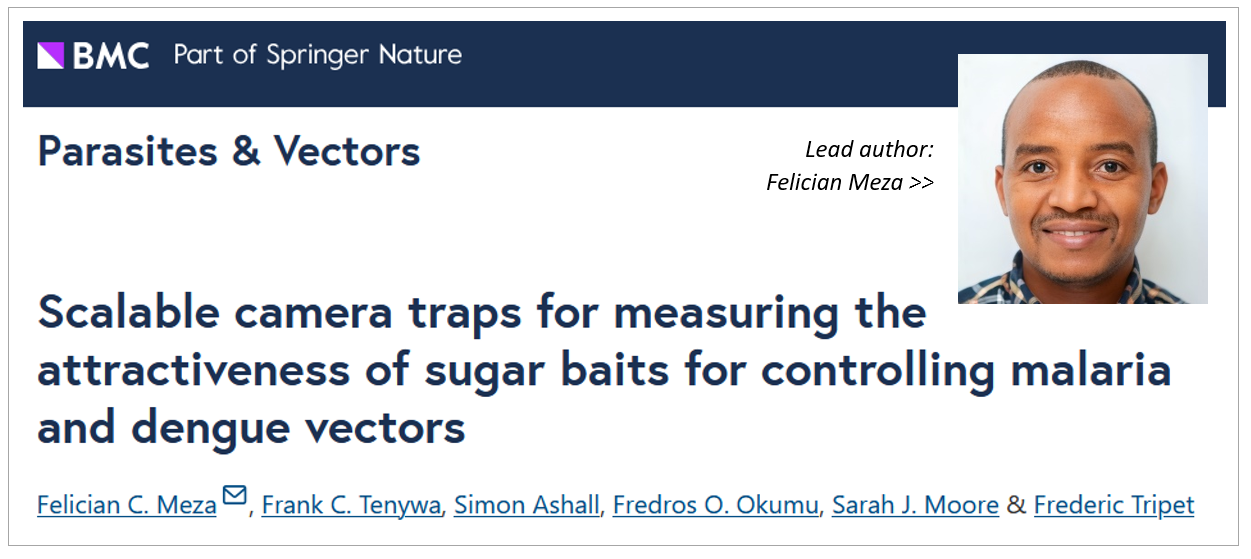
MALARIA RESEARCH: Camera traps reveal effectiveness of sugar baits

In an innovative study conducted in rural Tanzania, researchers have employed advanced camera trap technology to gather reliable data on how mosquitoes interact with Attractive Targeted Sugar Baits (ATSBs).
These devices have proven to be invaluable for recording mosquito behavior, showing which baits attract mosquitoes the most, thus paving the way for more targeted and efficient mosquito control strategies in the future.
The conclusion of this study – led by Ifakara Health Institute scientists – underscores the effectiveness of camera traps in evaluating and enhancing ATSB technology. Ifakara scientists behind this are: Felician Meza, Frank Tenywa, Fredros Okumu and Sarah Moore.
Scientists affiliated to the Centre for Applied Entomology and Parasitology, Keele University, UK; the Swiss Tropical & Public Health Institute and the University of Basel, Switzerland also contributed to this study – whose new findings were published on the BMC Parasites & Vectors recently.
Key findings
Higher Attraction to Baits: Significantly more mosquitoes, especially Anopheles arabiensis and An. funestus, were attracted to the baits with attractants compared to blanks or plain sugar solutions.
Gender and species preferences: Female mosquitoes, particularly An. funestus, showed a stronger preference for the attractant baits, visiting more frequently than males.
Field vs. semi-field: While human landing catch methods in the field captured around 70 An. arabiensis mosquitoes per person per night, the baits themselves attracted fewer but still significant visits, highlighting their potential in reducing mosquito populations.
Methodology highlights
The camera trap innovation: Customized camera traps were integrated into a robust monitoring station, capturing images of mosquitoes landing on baits both day and night.
Semi-field Experiments: Conducted in controlled large cages, these experiments involved releasing different species of mosquitoes to observe their interaction with various baits over 72 hours.
Field study: In real-world settings, 16 camera traps were deployed in households to compare the attractiveness of different bait configurations alongside traditional human landing catch methods.
Study confirms camera traps
Based on findings of this study, the scientists conclude that the camera traps offer a reliable, reproducible, and quantitative way to assess the attractiveness of ATSBs.
This technology not only aids in evaluating current bait effectiveness but will also be instrumental in improving future mosquito control strategies, potentially leading to a significant decrease in mosquito-related diseases in affected regions.
>> Read the full journal article online, here.
